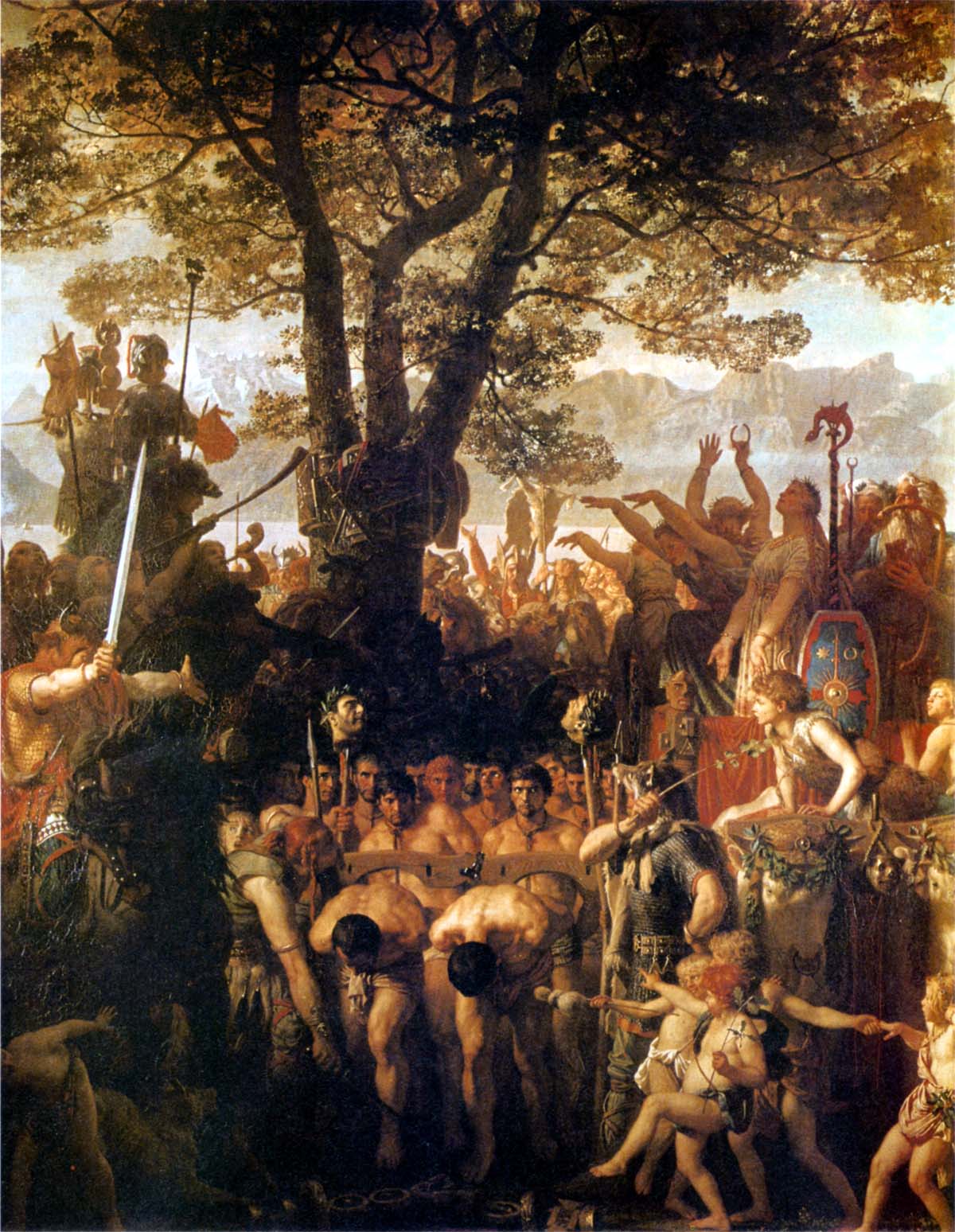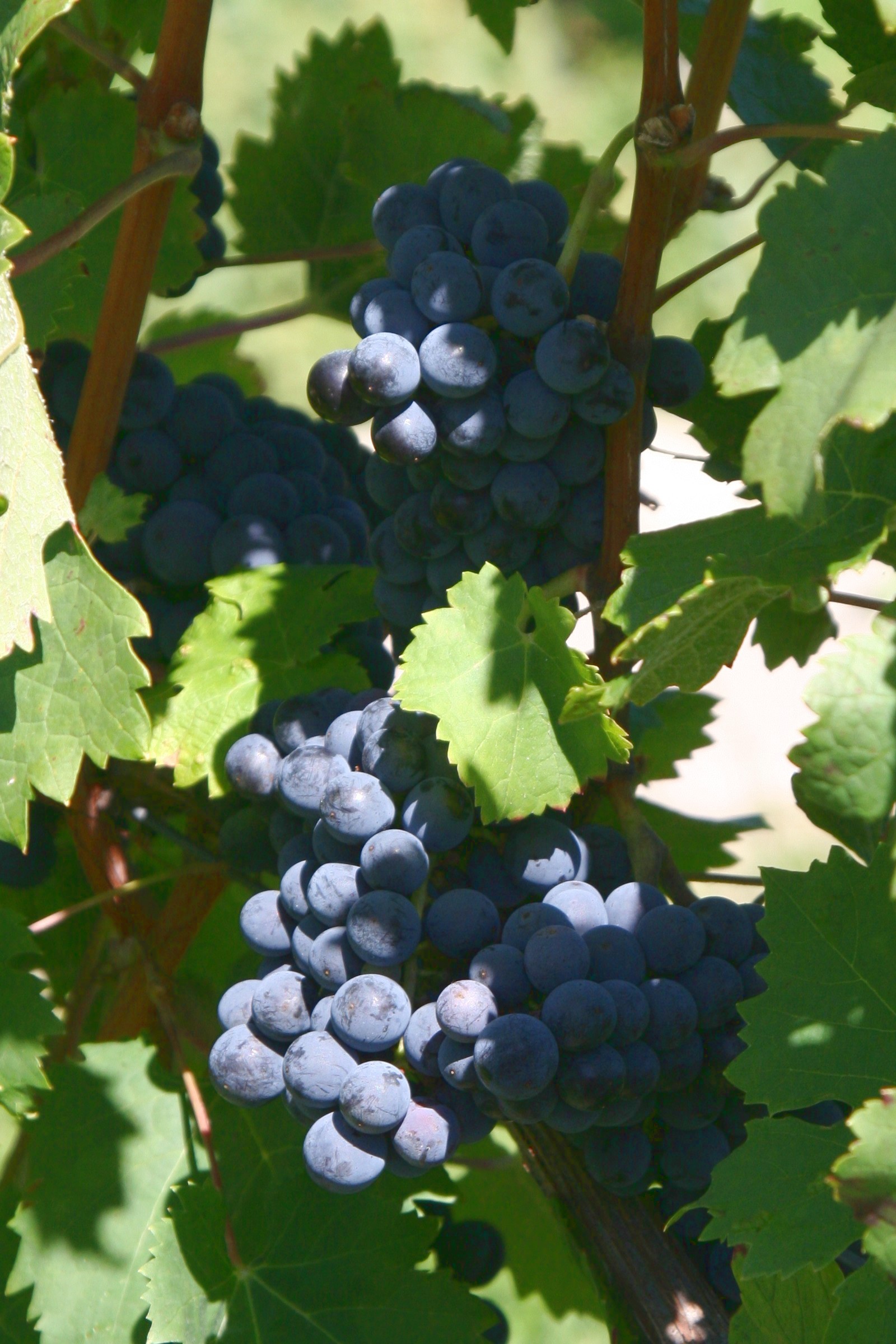|
Bronner (grape)
Bronner is a white grape variety used for wine.Wein-Plus: Bronner accessed on March 6, 2013Vitis International Variety Catalogue: Bronner, database record 17129 , accessed on March 25, 2009 It was bred in 1975 by Norbert Becker at the viticultural institute in Freiburg, Germany. The variety was initially known ... [...More Info...] [...Related Items...] OR: [Wikipedia] [Google] [Baidu] |
Vitis Vinifera
''Vitis vinifera'', the common grape vine, is a species of flowering plant, native to the Mediterranean Basin, Mediterranean region, Central Europe, and southwestern Asia, from Morocco and Portugal north to southern Germany and east to northern Iran. There are currently between List of grape varieties, 5,000 and 10,000 varieties of ''Vitis vinifera'' grapes though only a few are of commercial significance for wine and table grape production. The wild grape is often classified as ''Vitis vinifera'' ''sylvestris'' (in some classifications considered ''Vitis sylvestris''), with ''Vitis vinifera'' ''vinifera'' restricted to cultivated forms. Domesticated vines have hermaphrodite#Botany, hermaphrodite flowers, but ''sylvestris'' is plant sexuality, dioecious (male and female flowers on separate plants) and pollination is required for fruit to develop. Grapes can be eaten fresh or dried to produce raisins, Sultana (grape)#Raisins, sultanas, and Zante currant, currants. Grape leaves ar ... [...More Info...] [...Related Items...] OR: [Wikipedia] [Google] [Baidu] |
Helmut Becker
Helmut Becker (8 March 1927 – 19 July 1990), German viticulturist, was chief of the Geisenheim Grape Breeding Institute.Andrew G Reynolds, ''Grapevine Breeding Programs for the Wine Industry: Traditional and Molecular Techniques'' Elsevier, 2015, , p. 92 ff As a successor of Heinrich Birk, he viewed viticulture from a global perspective and promoted the globalization of a quality wine industry. Dr. Becker collaborated with numerous scientists around the world and encouraged the importation of important Cloning, clones and varieties in New Zealand, Canada, Australia, Japan and other countries. He did early important work in Neustadt/Weinstrasse during the 1950s and 1960s in the European phylloxera eradication program. Some of the grape varieties bred by Helmut Becker at the Research Institute Geisenheim : File:Saphira-08-8.JPG, Saphira (grape), Saphira File:Rondo-07-1.JPG, Rondo (grape), Rondo File:Prinzipal 04a 6.JPG, Prinzipal (grape), Prinzipal File:Dakapo 04 6.JPG, Dakapo Fil ... [...More Info...] [...Related Items...] OR: [Wikipedia] [Google] [Baidu] |
Dioecious
Dioecy (; ; adj. dioecious , ) is a characteristic of a species, meaning that it has distinct individual organisms (unisexual) that produce male or female gametes, either directly (in animals) or indirectly (in seed plants). Dioecious reproduction is biparental reproduction. Dioecy has costs, since only about half the population directly produces offspring. It is one method for excluding self-fertilization and promoting allogamy (outcrossing), and thus tends to reduce the expression of recessive deleterious mutations present in a population. Plants have several other methods of preventing self-fertilization including, for example, dichogamy, herkogamy, and self-incompatibility. Dioecy is a dimorphic sexual system, alongside gynodioecy and androdioecy. In zoology In zoology, dioecious species may be opposed to hermaphroditic species, meaning that an individual is either male or female, in which case the synonym gonochory is more often used. Most animal species are dio ... [...More Info...] [...Related Items...] OR: [Wikipedia] [Google] [Baidu] |
Open Pollination
"Open pollination" and "open pollinated" refer to a variety of concepts in the context of the sexual reproduction of plants. Generally speaking, the term refers to plants pollinated naturally by birds, insects, wind, or human hands. True-breeding definition "Open pollinated" generally refers to seeds that will "breed true". When the plants of an open-pollinated variety self-pollinate, or are pollinated by another representative of the same variety, the resulting seeds will produce plants roughly identical to their parents. This is in contrast to the seeds produced by plants that are the result of a recent cross (such as, but not confined to, an F1 hybrid), which are likely to show a wide variety of differing characteristics. Open-pollinated varieties are also often referred to as standard varieties or, when the seeds have been saved across generations or across several decades, heirloom varieties. While heirlooms are usually open-pollinated, open-pollinated seeds are not necessar ... [...More Info...] [...Related Items...] OR: [Wikipedia] [Google] [Baidu] |
Gamaret
Gamaret is a variety of red wine grape.Gamaret , Vitis International Variety Catalogue, accessed on June 20, 2010 It was created by André Jaquinet at ''Station Fédérale de Recherches en Production Végétale de Changins'' in 1970 by crossing Gamay and Reichensteiner. Gamaret was developed for cultivation in French Switzerland, and is a full sibling of ... [...More Info...] [...Related Items...] OR: [Wikipedia] [Google] [Baidu] |
Divico (grape)
Divico was a Celtic king and the leader of the Helvetian tribe of the Tigurini. During the Cimbrian War, in which the Cimbri and Teutons invaded the Roman Republic, he led the Tigurini across the Rhine to invade Gaul in 109 BC. He defeated a Roman army near present-day Agen on the Garonne river at the Battle of Burdigala in 107 BC, killing its leaders Lucius Cassius Longinus, the Roman consul, and Lucius Calpurnius Piso Caesoninus. Eventually he led his people back to the tribes of the Helvetii, near present-day Switzerland where they settled in the Jura Mountains near Lac Leman. 49 years later, before the Battle of Bibracte, he led a delegation back to Gaul to negotiate for a safe passage for his tribe through the Roman region of Provence. The request was denied by Caesar who wanted revenge for a relative who had been killed in the battle near Agen in 107 BC. He is not to be confused with the military and religious leader of another gaulish tribe, Diviciacus of the Aedui. ... [...More Info...] [...Related Items...] OR: [Wikipedia] [Google] [Baidu] |
Vitis International Variety Catalogue
The Vitis International Variety Catalogue (VIVC) is a database of various species and varieties/cultivars of grapevine, the genus ''Vitis''. VIVC is administered by the Geilweilerhof Institute for Grape Breeding (''Institut für Rebenzüchtung Geilweilerhof'') in Siebeldingen, Germany, and contains information from grapevine collections existing in various institutes of viticulture around the world. As of April 2009, the information in the database brought together information from 130 institutions located in 45 countries, and contains about 18,000 entries. The database was started in 1983, and has been available online since 1996. Its initial creation was supported by the International Organisation of Vine and Wine and the International Board for Plant Genetic Resources, a forerunner of Bioversity International. The purpose of the VIVC database is to provide documentation on available grapevine genetic resources, and to be a source of information to grape breeders, viticultura ... [...More Info...] [...Related Items...] OR: [Wikipedia] [Google] [Baidu] |
Souvignier Gris
Souvignier gris is a white German wine grape variety that was created in 1983 by Dr. Norbert Becker. It is a cross between Seyval blanc and Zähringer, but was originally thought to be a cross between Cabernet Sauvignon and Bronner. History and lineage Souvignier gris was developed in 1983 at the viticultural research institute of Freiburg, Germany, and DNA analysis has shown it to be a cross between Seyval Blanc and Zähringer. Originally reported lineage Souvignier gris was originally incorrectly registered as a cross between the red French wine grape variety Cabernet Sauvignon and the white German grape crossing previously created by Becker known as Bronner. Bronner was also developed by Becker in 1975 at the viticultural research institute of Freiburg, and is a crossing of the hybrid varieties Merzling (mother vine) and Geisenheim 6494 (father vine). Geisenheim 6494 is a crossing of Zarya Severa with St. Laurent while Zähringer is a crossing between Gewürztraminer ... [...More Info...] [...Related Items...] OR: [Wikipedia] [Google] [Baidu] |
Cabernet Sauvignon
Cabernet Sauvignon () is one of the world's most widely recognized red wine grape varieties. It is grown in nearly every major wine producing country among a diverse spectrum of climates from Australia and British Columbia, Canada to Lebanon's Beqaa Valley. Cabernet Sauvignon became internationally recognized through its prominence in Bordeaux wines, where it is often blended with Merlot and Cabernet Franc. From France and Spain, the grape spread across Europe and to the New World where it found new homes in places like California's Santa Cruz Mountains, Paso Robles, Napa Valley, New Zealand's Hawke's Bay, South Africa's Stellenbosch region, Australia's Margaret River, McLaren Vale and Coonawarra regions, and Chile's Maipo Valley and Colchagua. For most of the 20th century, it was the world's most widely planted premium red wine grape until it was surpassed by Merlot in the 1990s. However, by 2015, Cabernet Sauvignon had once again become the most widely plante ... [...More Info...] [...Related Items...] OR: [Wikipedia] [Google] [Baidu] |
Hybrid Grape
Hybrid grapes are grape varieties that are the product of a crossing of two or more ''Vitis'' species. This is in contrast to crossings between grape varieties of the same species, typically ''Vitis vinifera'', the European grapevine. Hybrid grapes are also referred to as inter-specific crossings or "Modern Varieties." Due to their often excellent tolerance to powdery mildew, other fungal diseases, nematodes, and phylloxera, hybrid varieties have, to some extent, become a renewed focus for European breeding programs. The recently developed varieties, Rondo, and Regent are examples of newer hybrid grape varieties for European viticulturalists. Several North American breeding programs, such as those at Cornell and the University of Minnesota, focus exclusively on hybrid grapes, with active and successful programs, having created hundreds if not thousands of new varieties. Hybrid varieties exhibit a mix of traits from their European, Asiatic, and North American parentage. Those ... [...More Info...] [...Related Items...] OR: [Wikipedia] [Google] [Baidu] |
Rondo (grape)
Rondo is a dark-skinned grape variety, used for making red wine. It is a hybrid grape or inter-specific crossing. It was created in 1964 by Professor :cs:Vilém_Kraus_(1924), Vilém Kraus in then-Czechoslovakia by crossing the varieties Zarya Severa (a hybrid which has ''Vitis amurensis'' in its Plant breeding, pedigree) and St. Laurent (grape), St. Laurent. He offered it to Dr. Helmut Becker (1927-1990) of the Geisenheim Grape Breeding Institute who conducted further work on it, which explains why the grape is known under a Geisenheim designation. The variety was first planted for research and later in bigger scale in the mid 1980s by Thomas Walk Vineyard in Ireland under the name Amurensis Walk; it was named Rondo in 1997 (German Federal Office's Varieties Register). This very early maturing variety possesses high resistance against winter frost and downy mildew from its Asiatic ''Vitis amurensis'' parent. However annual treatments against powdery mildew may still be necessary i ... [...More Info...] [...Related Items...] OR: [Wikipedia] [Google] [Baidu] |





